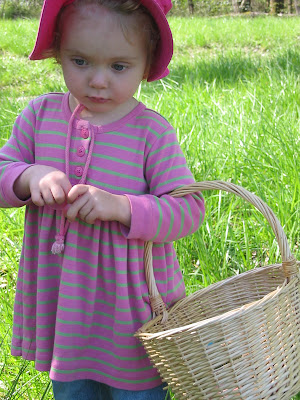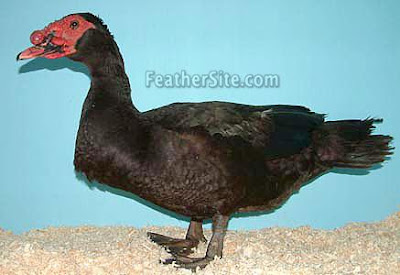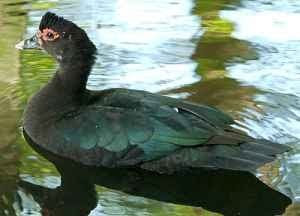Now (less than 12 hours before my final exam) is when I get very serious about reviewing the reading I did throughout the term. I will go through the lectures that I feel a little rusty on, since the mid-term, and find the main points. (If anyone cares...it sure beats writing in my notebook some more, and maybe there is a Western Art nerd out there somewhere who will find all this to be useful).
HIGH RENAISSANCE IN ITALY a brief period 1480-1600
-intensified interest in humanism
-exploration/ increased travel
-more people learned to read, changing art styles from being more regional to international
-realistic naturalism from Classical style was the acceptable tradition
-more complex compositions
-larger size of works
-greater realism than Early Renaissance
-artists became more recognized and celebrated (intellectual and creative accomplishment rose in importance above aristocratic birth for the first time)
-painting, sculpture and architecture became known as liberal arts instead of manual crafts (as in Middle Ages)
-A time of creative genius...the main geniuses were:
Leonardo da Vinci
Michelangelo
Raphael
...they strove to match or exceed Classical realism, figural beauty, harmonious compositional effects, rationality, and quiet poses of Antiquity
-Their compositions had more convincing physical figures, were more monumental (huge, collossal) and more unified than ever before.
Leonardo
-great realism, monumental compositions, carefully coordinated effects. Influenced painters for centuries.
-very sculptural, rounded figures
-unified: figures connected physically, reaching out to each other, intimate contact, bearing weight, tender gazes
-used chiaroscuro (like all Renaissance painters)- alternation of light and dark areas to give volume in figures.
-own invention of sfumato enhanced chiaroscuro- infinitesimal graduations of dark to light erasing hard edges of forms. Possible by oil paint.
-indirect lighting suggests dusk or poorly lit room
-atmospheric perspective: moisture in the air blurs and obscures distant details. Bluish look. Convincing sense of nature and deep space. Effective with oil paint.
-depicted figures as ideal types: youth, maturity and old age
-his wide range of talents categorized him as genius: human anatomy, biology, geology, hydraulics, military engineering, physical science and painting.
Michelangelo
-range of interests: sculptor, painter, poet, architect
-a master, monumental male nudes painted and sculpted (emulated by other artists for centuries)
-painting and sculpture colossally conceived, emphasis on realism, not limited by classical rules of harmony and balance
-made his own rules - life work to out-do Classical models
-pieta: a representation of the Madonna mourning over the martyred Christ. Popular Christian theme by many artists over the centuries.
David, his famous sculpture has the following things in common with Classical works:
-contrappasto pose
-idealized figure
-large size
-depiction of/celebration of male nude body
-quiet, serene facial expression
-handsome, regular facial features
Things about David that are different from Classical works:
-changeable facial expression with angle- quiet and serene, to intense w/furrowed brow.
-immense size much larger than life
-made masterpiece out of marble deemed flawed by other artists
-subtle play with proportions using special mathematical, perspective and proportional skills to make it look realistic and naturalistic when standing below it's immense size.
Sistine Chapel Ceiling:
-buon fresco
-monumental and compositionally complex
-economy of means
-Renaissance idealization
-sculpturally treated- solid, weighty and three dimensional as statues
-tour de force - work of a lifetime
MUCH later work- LAST JUDGEMENT ALTERPIECE
-buon fresco
-male nudes- expressive, irregular, not idealized, distorted
-figures in composition not same scale
-no linear perspective
-no physical or spacial security
-artist depicted self as face on St. Bartholemew's flayed skin
-shows spiritual upheaval, weakness of pope, artist's feelings about Church's leadership failure
Titian
-most prodigous and prolific 17th century Venetian painter
-supreme colorist
-father of modern mode of painting
-adoption of canvas in place of wood panels
-Pesaro Alterpiece :
reds unite color throughout
variety in compositional arrangements (figure not centered or facing square on)
-reinvented portraiture with character
-loose, free painting suggests not describes
-like Leonardo, sfumato and indirect light
Reintroduction of subject of Classical mythology with interest in sensual, female nudes.
-Venuses abound. Full bodied, idealized, reclining, erotic.
-popular subject for 400 years.
BAROQUE PAINTING IN ITALY, FRANCE AND SPAIN 1600-1700
-beginning of modern era, world as we know it took shape
-modern attitudes about political systems and cultural practices based on principles of mankind, secular knowledge and the individual.
-age of extremes in religion, politics and the arts, extreme subject matter, and extreme passion
-end of church unity (Roman Catholic)brought protests, schizm (split) and bloody wars
-personal rights and a say in government
-merging of politics and arts
-demanded paintings of ordinary citizens
-strong contrast paintings: filled with active writhing twisted figures, unidealized figures and faces, light/ dark contrasts
-movingly effective religious images
Caravaggio
-squalid life
-effective movingly religious subjects
-unidealized people, scoundrels, prostitutes, washerwomen, rough people
-everyday people in scenes with Christ and the saints
Bernini
-greatest Baroque sculptor
-figures energetic, alive, full of movement
-theatricality-going to extremes to achieve an effect
-subjective: internal phenomenon, experiences that cannot be proven, not externally verifiable
Royalty and Propoganda painting: made the greater glory of religion and MONARCHY visible.
-apotheosis: a scene depicting monarchs and nobles, in the company of mythical gods and goddesses and allegorical figures. (Allegorical figures represent abstract concepts). They are political propoganda.
-trompe l'oeil: 'to fool the eye'. Trompe l'oeil creates an optical illusion that makes painted objects seem to be so real, so three dimensional, that they seem to intrude into the viewer's space. Trompe l'oeil paintings make it hard for a viewer to tell what is real and what is painted.
Rubens
- outstanding master of the florid over the top energized Baroque painting style.
-bulging, billowing, fluttering, clouds and fabric.
- scenery pulses with life
- dynamic twisting poses, dramatic gestures
- often viewed from unusual angles
Velasquez
-royal portraits
-simple settings
-quiet sober colors
-unidealized subjects
-physiology of human perception: brain fills in what eye doesn't see
-breaks down barriers between reality and art
-loose, sloppy, imprecise brush strokes to be viewed 15-20 feet away
NEOCLASSICAL PERIOD 1760's -early 1800's
-paid homage to classical models
-moralizing in dignified, substantial scenes from history
-personal integrity, high minded ideals, nobility of character depicted
-Classical style posessions, dishes, clothing, art, etc. very trendy
David
-French painter, best known neoclassical
-realistic, naturalistic
-familiar w/Greek and Roman design
-spare and simple settings
Oath of the Horatii
-figures resemble sculpture. frozen, not about to move
-dignified historical subject
-this piece was a touchstone in political debate that led to revolution
Death of Marat
-contemporary subject
-theme noble sacrifice, rigorous simplicity
-male nude in Classical tradition
-iconographic martyr pose
Neoclassical architecture
-art and politics closely combined
-Greek democracy and Roman republicanism favorite style for American public and domestic buildings
-columns, triangular pediments, Roman rounded domes
-white paint to emulate marble
-Thomas Jefferson, statesman, architect, president
planned and designed rotunda building for Uof Virginia, and his home in the above styles.
his home- Roman version of Greek temple style
-US capitol building ribbed vault dome for height, uninterrupted Roman interior chamber space, outer columns and triangular pediments
Oh my goodness it's getting late. I'd like to get into details of the several other lectures, but I need sleep. My babies have woken 7 or 8 times during this review blog project, and I have laid them down, managing to return for more review. I am very committed tonight, but I think I'm at the end of my brain power. Better let it be, and sleep before the final. These were the chapters that I was the least comfortable with, anyway.
Nighty night.











 We are so thrilled with their little peeping cutenesses!
We are so thrilled with their little peeping cutenesses! June will be smaller, less warty, and somewhat prettier, like her mother.
June will be smaller, less warty, and somewhat prettier, like her mother. I thought about only having her, but I thought she would probably appreciate having a guy around. I'm sure she will find him to be quite handsome through her own ducky outlook. And of course, no matter how quirky they turn out, we love them already!
I thought about only having her, but I thought she would probably appreciate having a guy around. I'm sure she will find him to be quite handsome through her own ducky outlook. And of course, no matter how quirky they turn out, we love them already!






 my friend
my friend Jenn,
Jenn,  We played,
We played, ate,
ate,  dug,
dug,  felt the wind blow,
felt the wind blow,

 got our feet wet,
got our feet wet,  ate a picnic and some sand
ate a picnic and some sand  (well, one of us did!), found a wormy snake-like critter
(well, one of us did!), found a wormy snake-like critter , and enjoyed the sun and clouds alternately.
, and enjoyed the sun and clouds alternately.  He took a couple of nose dives in the sand, and then had a steady stream of sandy nose runs
He took a couple of nose dives in the sand, and then had a steady stream of sandy nose runs  for the entire time.
for the entire time.  Reya began the day, terrified of the ocean, because it "chases" her,
Reya began the day, terrified of the ocean, because it "chases" her,  but with loving encouragement,
but with loving encouragement,  she began to find courage,
she began to find courage, and ended up loving it!
and ended up loving it! New house, a new, free entertainment center, and what did I decide to put in the big hole where the TV is meant to go?
New house, a new, free entertainment center, and what did I decide to put in the big hole where the TV is meant to go? 


 and bring some of it in to our home to reflect upon. I'd love to add some little felted critters, but with lack of crafting time right now, I am pleased with this for a start. The inspiration all started from the biggest dandelion patch, growing in the nook at the base of a tree in our yard.
and bring some of it in to our home to reflect upon. I'd love to add some little felted critters, but with lack of crafting time right now, I am pleased with this for a start. The inspiration all started from the biggest dandelion patch, growing in the nook at the base of a tree in our yard. 
 David, by Michaelangelo, High Renessaince in Italy Period, 1504 Yes!
David, by Michaelangelo, High Renessaince in Italy Period, 1504 Yes! Venus of Urbino, by Titian, 16th Century in Italy, 1538Yes!
Venus of Urbino, by Titian, 16th Century in Italy, 1538Yes! The Entombment of Christ, Caravaggio, Baroque Period in Italy, 1613?close, but not quite- 1603 How will I remember this one? Hmmm. Yes I know. The holy trinity is 3. 1600 + the trinity!
The Entombment of Christ, Caravaggio, Baroque Period in Italy, 1613?close, but not quite- 1603 How will I remember this one? Hmmm. Yes I know. The holy trinity is 3. 1600 + the trinity! Rembrandt's Self Portrait, Baroque Period in Holland, 1649Nope- 1658. Another memory tool. UMMM thousands place, then number pattern:654, except the last digit is doubled like the portrait is a double of himself...1 then 658
Rembrandt's Self Portrait, Baroque Period in Holland, 1649Nope- 1658. Another memory tool. UMMM thousands place, then number pattern:654, except the last digit is doubled like the portrait is a double of himself...1 then 658 The Rakes Progress Series, The Heir, Hogarth, 18th Century Middle Class Life, 1732-33Yes!
The Rakes Progress Series, The Heir, Hogarth, 18th Century Middle Class Life, 1732-33Yes! The Oath of the Horatii, David, Noeclassical Period, 1795- darn it!1784 What is the trick on this one? subtract one from each of the last two digits that I thought it was? too confusing. I may not remember what I thought it was. I know. The usual one for the thousands place, then 7 (God's number...creation) 8 (consecutive), then cut the 8 in half like a sword slice for the 4.This is a long shot...we'll see.
The Oath of the Horatii, David, Noeclassical Period, 1795- darn it!1784 What is the trick on this one? subtract one from each of the last two digits that I thought it was? too confusing. I may not remember what I thought it was. I know. The usual one for the thousands place, then 7 (God's number...creation) 8 (consecutive), then cut the 8 in half like a sword slice for the 4.This is a long shot...we'll see. The Third of May 1808, Goya, Romanticism, 1814Yes!
The Third of May 1808, Goya, Romanticism, 1814Yes! The Stone Breakers, Corbet, Realism, 1856?-Argh 1849 Halfway through the 19th century, then minus one because the poor are always getting the short end of the stick (this painting is supposed to be illustrating the perils of the poor laborers of the Realistic period).
The Stone Breakers, Corbet, Realism, 1856?-Argh 1849 Halfway through the 19th century, then minus one because the poor are always getting the short end of the stick (this painting is supposed to be illustrating the perils of the poor laborers of the Realistic period).